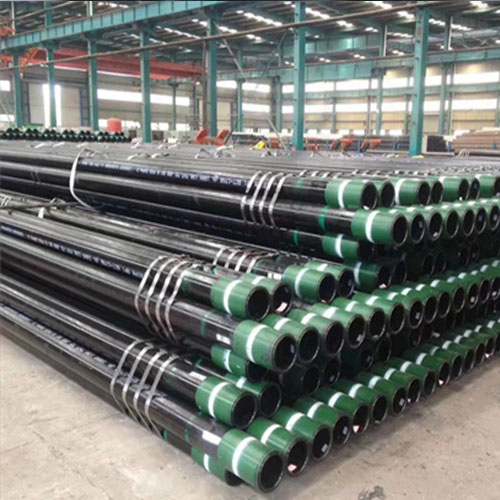introduction to Well Design: A Comprehensive overview
Well design is a critical aspect of the Oil and gas industry, encompassing various elements crucial for efficient and safe extraction operations. Among these elements, casing plays a fundamental role in ensuring the integrity and stability of oil and gas wells. This article provides a comprehensive overview of well design, focusing particularly on API standards of casing.
In the realm of well design, meticulous planning and adherence to industry standards are paramount. From the initial conceptualization phase to the execution of drilling activities, every step requires careful consideration to mitigate risks and optimize production. Central to this process is the selection and installation of casing, which serves multiple functions ranging from structural support to preventing fluid migration.

The american petroleum Institute (API) sets forth standards and guidelines that govern various aspects of oil and gas operations, including casing design and specifications. These standards ensure uniformity, quality, and safety across the industry, fostering consistency and reliability in well construction practices.
API standards pertaining to casing encompass a range of specifications, including material composition, dimensions, and performance requirements. Casing strings are typically categorized based on their diameter, wall thickness, and grade, with each category tailored to specific well conditions and operational requirements. For instance, wells drilled in challenging environments such as deepwater or high–pressure reservoirs may necessitate casing with enhanced strength and corrosion resistance.
API standards also dictate testing procedures to evaluate the mechanical properties and integrity of casing materials. Non-destructive testing methods, such as ultrasonic inspection and magnetic particle testing, are employed to detect defects or anomalies that could compromise the structural integrity of the casing.
Furthermore, API standards outline procedures for casing installation and cementing, crucial steps in ensuring well integrity and zonal isolation. Proper casing installation involves meticulously threading and coupling individual casing joints to form a continuous, leak-proof barrier against fluid migration. Additionally, cementing operations involve injecting cement slurry into the annular space between the casing and the wellbore wall, effectively sealing off potential pathways for fluid migration and providing additional support to the casing string.
In addition to technical specifications, API standards also address environmental and regulatory considerations, emphasizing the importance of sustainable practices and compliance with local regulations. Environmental stewardship and community engagement are integral components of well design, reflecting the industry’s commitment to responsible resource development and minimizing environmental impacts.
In summary, well design encompasses a myriad of considerations, with casing playing a central role in ensuring the integrity and longevity of oil and gas wells. Adherence to API standards ensures that casing materials, design, and installation processes meet stringent quality and safety requirements, promoting reliability and efficiency in well construction practices. By upholding these standards and embracing best practices, the oil and gas industry can achieve sustainable growth while safeguarding the environment and surrounding communities.
API Standards for Casing: Ensuring Quality and Safety in Well Construction
Well design is a critical aspect of ensuring the integrity and longevity of oil and gas wells. It involves various processes and standards to ensure that wells are constructed and maintained to meet safety, environmental, and operational requirements. One of the key components of well design is casing, which plays a crucial role in providing structural support, preventing fluid migration, and isolating different geological formations. In this article, we will explore the importance of API standards for casing and their role in ensuring quality and safety in well construction.
keystone oil PipelineThe American Petroleum Institute (API) has developed a set of standards that govern the design, materials, and testing requirements for oilfield equipment, including casing. These standards are widely recognized and adopted by industry stakeholders, including oil and gas operators, drilling contractors, and regulatory agencies. By adhering to API standards, operators can ensure that casing components meet minimum requirements for strength, durability, and performance in various operating conditions.
API standards for casing cover a range of specifications, including casing dimensions, material properties, manufacturing processes, and inspection procedures. These standards are designed to promote consistency, reliability, and interoperability across different manufacturers and suppliers. By standardizing casing specifications, API helps to minimize the risk of compatibility issues and ensure that casing components can be readily sourced and installed in wells around the world.
One of the key aspects of API standards for casing is the classification of casing grades based on their mechanical properties and performance characteristics. These grades are designated by alphanumeric codes, such as H-40, J-55, K-55, N-80, and p-110, which indicate the minimum yield strength of the casing material in thousands of pounds per square inch (ksi). Higher-grade casing materials are typically used in more demanding environments, such as deepwater or high-pressure/high-temperature (HPHT) wells, where greater strength and corrosion resistance are required.
In addition to mechanical properties, API standards also specify dimensional tolerances, thread types, and connection designs for casing components. These specifications are crucial for ensuring proper fit and compatibility between casing joints, as well as facilitating efficient installation and operation of downhole equipment, such as casing hangers, packers, and production Tubing.
API standards for casing also include requirements for testing and inspection to verify compliance with specified criteria. These tests may include visual inspection, dimensional measurement, non-destructive testing (NDT), and mechanical testing of casing samples. By conducting rigorous testing and inspection procedures, operators can identify any defects or deviations from the standard and take corrective actions to prevent potential failures or accidents during well construction and operation.
Overall, API standards for casing play a vital role in promoting quality, safety, and reliability in well construction. By adhering to these standards, operators can ensure that casing components meet minimum requirements for strength, durability, and performance, thereby minimizing the risk of wellbore integrity failures and environmental incidents. As the oil and gas industry continues to evolve and face new challenges, adherence to API standards remains essential for maintaining the integrity and sustainability of well construction practices.
